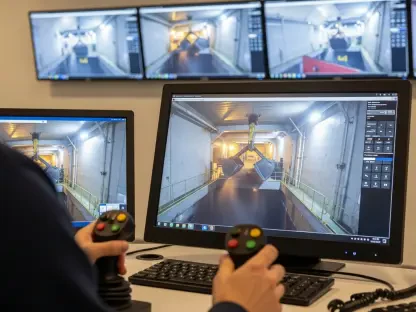As technological advancements continue to reshape global defense strategies, Norway has emerged as a pioneering force in integrating commercial 5G technology into its military operations. This innovative approach was prominently showcased during Norway’s Joint Viking exercise, a massive winter drill involving 10,000 soldiers. The exercise demonstrated how advanced telecommunications can transform a country’s defense capabilities, serving as a compelling case study for potential innovations in military strategy. Norway’s commitment to leveraging civilian technology represents a shift toward cooperation over competition, leading to more effective and efficient military operations.
Aligning Military and Civilian 5G Use
Collaboration with Civilian Telecom Companies
Norway’s strategic alliance with civilian telecom companies, particularly Telia and Ice, lies at the heart of its defense innovation. By capitalizing on existing commercial 5G infrastructure, Norway’s military can utilize the same frequency bands as civilian networks, ensuring seamless, secure communication across vast regions. This collaboration not only provides robust connectivity but also eliminates the need for developing separate military-exclusive networks, a process that can be costly and time-consuming. The decision to share frequency bands underscores a practical acknowledgment that civilian technology often leads military developments, offering a pathway for defense sectors to leverage cutting-edge innovations.
A significant facet of Norway’s strategy is the deployment of specialized SIM cards by the Norwegian Armed Forces. These dedicated SIM cards enable the military to differentiate its communications from civilian traffic, securing exclusive spectrum use and safeguarding sensitive information. By accessing the same base stations that support everyday communication, the military remains connected even in remote, challenging environments like Norway’s Arctic regions. This approach addresses the limitations of traditional military communication systems, which often struggle in such environments, and ensures that troops can maintain reliable contact regardless of location.
Enhancing Communication and Decision-Making Capabilities
Effective communication is a cornerstone of military operations, and the integration of 5G technology significantly enhances this aspect for Norway’s armed forces. Sindre Føllesdal from Norway’s Cyber Defense department highlights that this technological integration fosters quicker and more secure communications with improved situational awareness. The ability to transmit rich, real-time data strengthens commanders’ decision-making processes by providing a comprehensive view of the operational environment. This capability is particularly crucial in dynamic, high-stakes situations where timely, accurate information can determine mission success.
Norway’s prolonged evaluations and trials of 5G technology in military contexts demonstrate a commitment to integrating it as a permanent feature of Norway’s defense strategy by 2026. This foresight not only underscores the reliability and transformative potential of 5G technology but also reflects Norway’s status as NATO’s second-largest defense spender per capita. This significant investment underscores a dedication to defense innovation, prioritizing the modernization of communication systems to keep pace with evolving threats and opportunities.
The U.S. Perspective
Spectrum Challenges and Opportunities
Contrasting Norway’s approach, the United States has encountered formidable challenges in spectrum allocation, a complex issue arising from the growing demands of 5G expansion alongside the Pentagon’s focus on safeguarding defense systems. The dual-use model adopted by Norway, incorporating shared frequency bands and secure, military-specific technologies like custom SIM cards, presents a feasible solution for the U.S. The successful implementation of this model in Norway’s expansive regions, comparable to the geographic breadth of America’s eastern seaboard, suggests that such an approach could be adapted to U.S. military operations with promising results.
Roslyn Layton’s analysis suggests that America’s Defense Department has the requisite resources, advanced research facilities, and a thriving private sector to overcome these bureaucratic hurdles. By embracing a collaborative model similar to Norway’s, the U.S. can enhance its operational capacity, enabling drones, sensors, and troops to communicate securely over civilian networks. Adopting field-tested 5G integration could revolutionize communication efficiency and security, allowing American defense operations to evolve in tandem with rapidly advancing technology.
Moving Towards Strategic Partnerships
As technological advancements continue reshaping global defense strategies, Norway stands out as a leading nation in merging commercial 5G technology with military operations. This forward-thinking approach was prominently highlighted in Norway’s Joint Viking exercise, a large-scale winter drill involving 10,000 soldiers. This event showcased how cutting-edge telecommunications can revolutionize a country’s defense capabilities, providing a persuasive example of potential innovations in military strategy. By embracing civilian technology, Norway illustrates a significant shift toward cooperation rather than competition, ultimately aiming for more effective and efficient military operations. This integration not only enhances communication and operation speed but also positions Norway as a trailblazer in modern military strategy. Instead of relying solely on traditional methods, Norway’s approach represents a broader trend of adapting advanced civilian technology for military use, potentially setting a precedent for other nations to follow in pursuit of enhanced defense readiness and sustainability.









